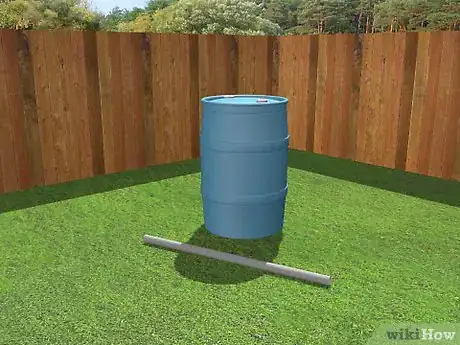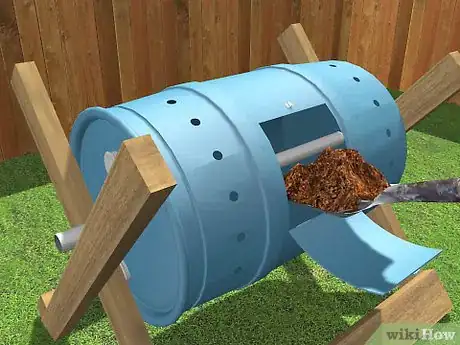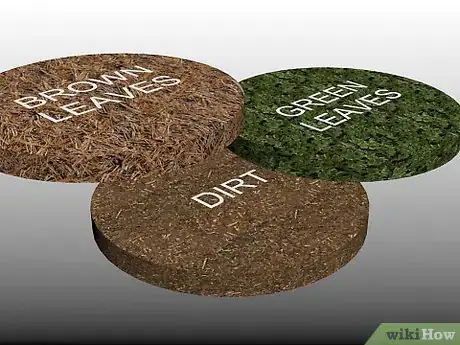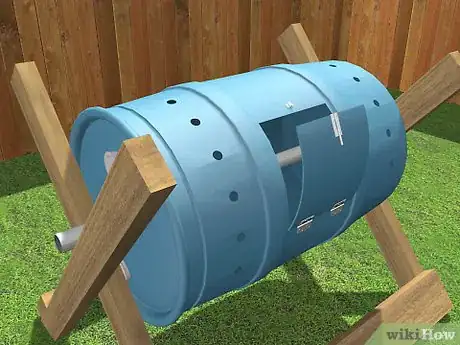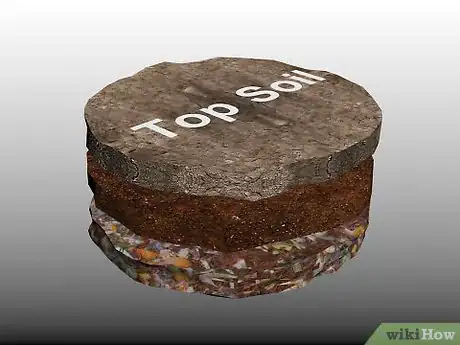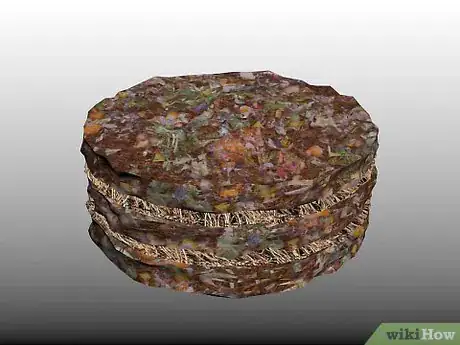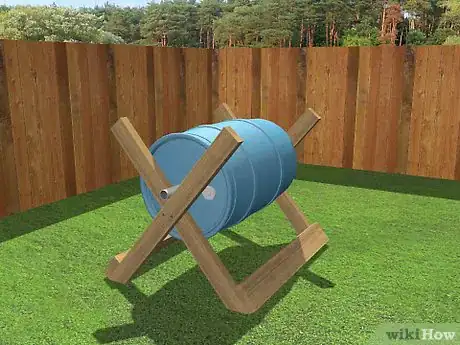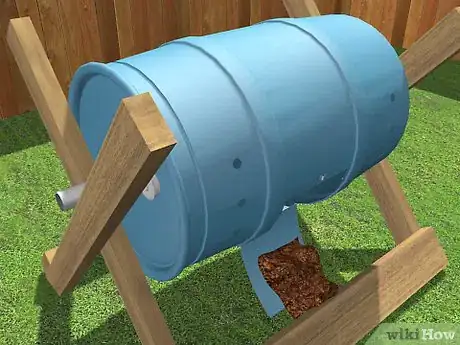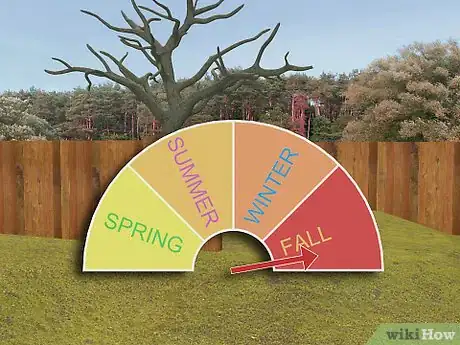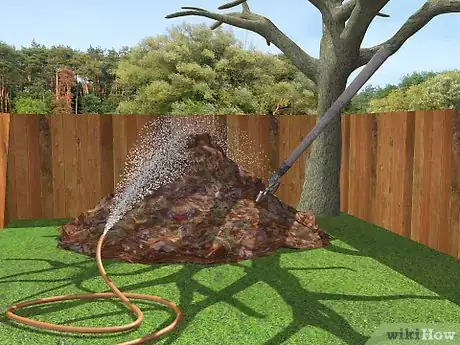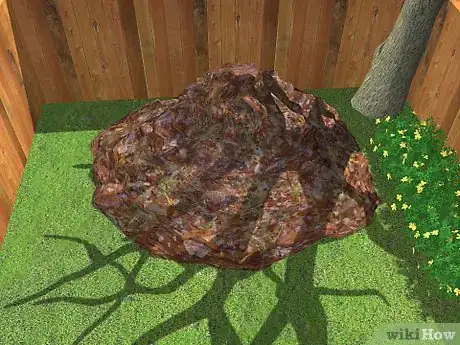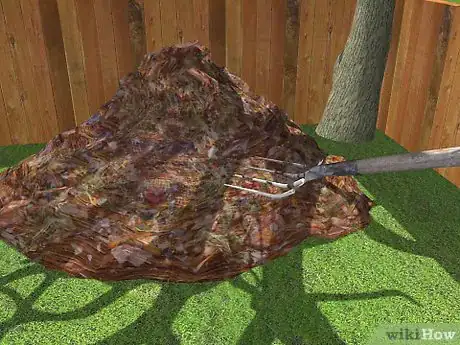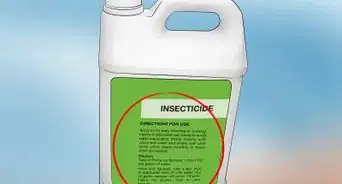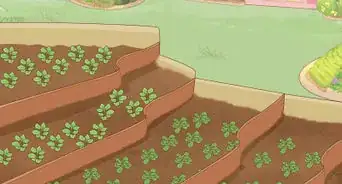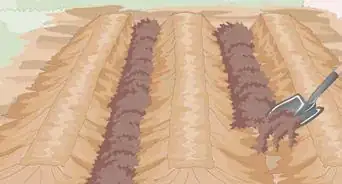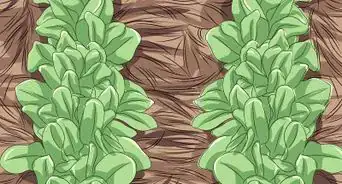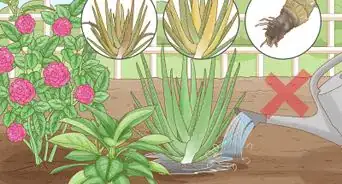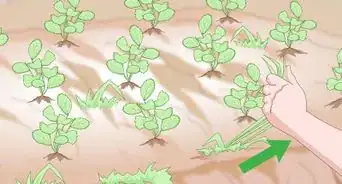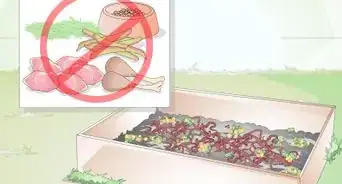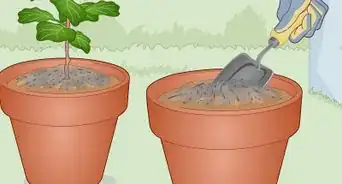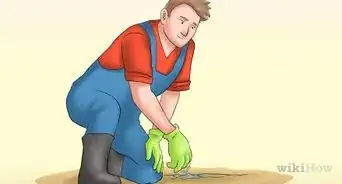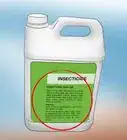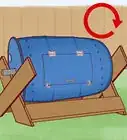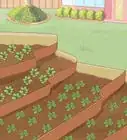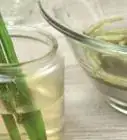This article was co-authored by Maggie Moran. Maggie Moran is a Professional Gardener in Pennsylvania.
wikiHow marks an article as reader-approved once it receives enough positive feedback. In this case, 88% of readers who voted found the article helpful, earning it our reader-approved status.
This article has been viewed 91,154 times.
Composting is an effective way to do something useful with kitchen scraps and yard refuse. It saves valuable landfill space and gives you rich, dark soil for gardens and planting. Many people avoid composting because compost piles are unsightly and have an unpleasant smell. Composting in a tumbler gives you improved aeration and the benefit of keeping your compost in a closed container. The tumbler method is simple. You start by filling the tumbler with compost materials, and then monitor the heat and moisture while the materials break down.
Steps
Filling the Tumbler
-
1Choose a tumbler. You can buy tumblers on the internet or at a garden supply store. You can also build your own. Pick a tumbler based on your needs. Remember that larger tumblers will take more strength to turn, but you will be able to compost more material at one time.[1]
- One advantage to tumblers is that they are more aesthetically pleasing (and less smelly) than compost piles. You can put your tumbler anywhere in your yard that is convenient.
-
2Put appropriate organic materials into the tumbler. Composting takes advantage of organic scraps to make a nutrient rich soil. These scraps can be anything from egg shells and left over salad to grass clippings or dried leaves. Just open up the lid on your tumbler and throw in any scraps that you have from the yard or kitchen.[2]
- Smaller sized pieces are better. Try grinding or shredding any large materials before adding them to the tumbler.
- There are many organic things that should not be put into the compost pile, including citrus peels, onions, meat, and fish scraps.
Advertisement -
3Balance your carbon and nitrogen. You want your end product to be a nutrient rich soil that can be used around your garden or home to grow things. Plants need a balance of carbon based and nitrogen based nutrients. You want your finished compost to have a carbon-nitrogen ratio of roughly 10-1. Adding a mixture of about 75% grass clippings and 25% kitchen scraps will typically put you in the right ball park.[3]
- The best way to gauge your carbon to nitrogen ratio is to keep track of the things you put in your tumbler. You can find guides that give you the relative carbon and nitrogen content of different compost materials online.
-
4Be aware of pesticides and contaminants. The microbes in the compost will break down some contaminants, but not all of them. If you want to avoid having pesticides and other contaminants in the plants you are growing, make sure that you don’t add them to your tumbler. You can use all organic ingredients to avoid getting pesticides in your compost.[4]
-
5Load the tumbler in batches. From start to finish, the compost can take anywhere from a couple of weeks to a couple of months. The important thing to remember is that this time frame is from the last scrap you put in, not the first. As the the compost forms, it will become more compact and make more room in the tumbler. This might tempt you to add more scraps, but be aware that doing so will restart the amount of time your compost will be in the tumbler.[5]
- Instead of continuing to add to the tumbler, you could have a compost bucket (or a second tumbler) that holds scraps until the current batch is finished. Then, you can move the second batch into the tumbler.
Composting the Materials
-
1Start the reaction. If you just put your materials in the tumbler, they will probably turn to compost on their own ― eventually. To make your composting process faster, you need to add some microbes to start breaking down the organic materials in the tumbler. There are several ways that you can do this:
- Add horse or cow manure to the tumbler.
- Add garden soil to the tumbler.
- Add a commercial composting mix to the tumbler. These can be found online or in a garden store.
-
2Turn the tumbler. The composting process requires air. In a tumbler, aerating is done quite easily. You simply turn the tumbler back and forth several times. Do this every two to three days for optimum aeration. The turning allows air to get mixed in with all levels of the compost.[6]
- Turning the composter too often will slow down composting.
-
3Place a pan underneath the tumbler. Most tumblers have a drain that allows liquid (known as compost tea) to drain out the bottom. You can collect this liquid in a pan or bowl underneath the tumbler. Pour the compost tea into your garden or use it to water your potted plants. This liquid is full of nutrients that will help your plants grow.[7]
Monitoring the Compost
-
1Watch the temperature inside the tumbler. Maintaining the correct temperature is crucial on two fronts for composting. First, a higher temperature will help break down the compost materials faster. Second, the compost needs to get hot enough to kill any unwanted pathogens and weed seeds. Measure the temperature with a thermometer. Ideally, it will be no lower than 140 degrees Fahrenheit (60 degrees Celsius).[8]
- If your compost is not getting hot enough, you can add manure or commercial products to increase the nitrogen levels and provide more heat.
-
2Keep the compost moist. Proper hydration will keep the compost from clumping into a hardened mess, or turning into a slush. The compost should stay about as moist as a wet sponge that has been rung out. If your compost is too dry, you can add water directly to the mix.[9]
-
3Observe the color and consistency. Many composters will refer to green and brown composting materials. Keep in mind that this actually has nothing to do with the color of the materials or the compost. It actually refers to the carbon (brown) and nitrogen (green) content of the material. Your compost should be a dark brown.
-
4Use the compost. Your compost is ready once it has a dark brown color and all of the materials have broken down. It will have a similar consistency to soil. Empty the tumbler and use the compost in your garden or potted plants. It will provide nutrients that the plants need to grow.[10]
- Some tumblers unload from the side. Others unload from the top or bottom.
Expert Q&A
Did you know you can get expert answers for this article?
Unlock expert answers by supporting wikiHow
-
QuestionCan you put bread in a compost tumbler?
 Maggie MoranMaggie Moran is a Professional Gardener in Pennsylvania.
Maggie MoranMaggie Moran is a Professional Gardener in Pennsylvania.
Home & Garden Specialist
-
QuestionWhat should I put in my compost tumbler?
 Maggie MoranMaggie Moran is a Professional Gardener in Pennsylvania.
Maggie MoranMaggie Moran is a Professional Gardener in Pennsylvania.
Home & Garden Specialist
-
QuestionHow can I speed up the composting process?
 Maggie MoranMaggie Moran is a Professional Gardener in Pennsylvania.
Maggie MoranMaggie Moran is a Professional Gardener in Pennsylvania.
Home & Garden Specialist
Warnings
- Avoid adding meats and dairy to your compost.⧼thumbs_response⧽
- Some people find the smell of compost to be unpleasant.⧼thumbs_response⧽
- Do not ingest the compost.⧼thumbs_response⧽
References
- ↑ https://www.planetnatural.com/tumbling-composter/
- ↑ http://www.the-compost-gardener.com/compost-ingredients.html
- ↑ https://www.planetnatural.com/tumbling-composter/
- ↑ https://www.planetnatural.com/tumbling-composter/
- ↑ http://www.the-compost-gardener.com/composting-tips.html
- ↑ https://www.planetnatural.com/tumbling-composter/
- ↑ https://www.planetnatural.com/tumbling-composter/
- ↑ https://www.planetnatural.com/tumbling-composter/
- ↑ https://www.planetnatural.com/tumbling-composter/
About This Article
To compost in a tumbler, start by filling your tumbler with small pieces of organic material, such as egg shells, fruit peels, grass clippings, and dried leaves. Next, add microbes such as garden soil or a commercial composting mix to speed up the composting process. Then, aerate the compost by turning the tumbler back and forth every 2 to 3 days to further encourage the composting process. Additionally, add more microbes to the compost pile if the temperature inside the tumbler falls below 140 degrees F. For more advice from our Horticulturist reviewer, including how to use the compost liquid that drains out from the bottom of your tumbler, keep reading.
